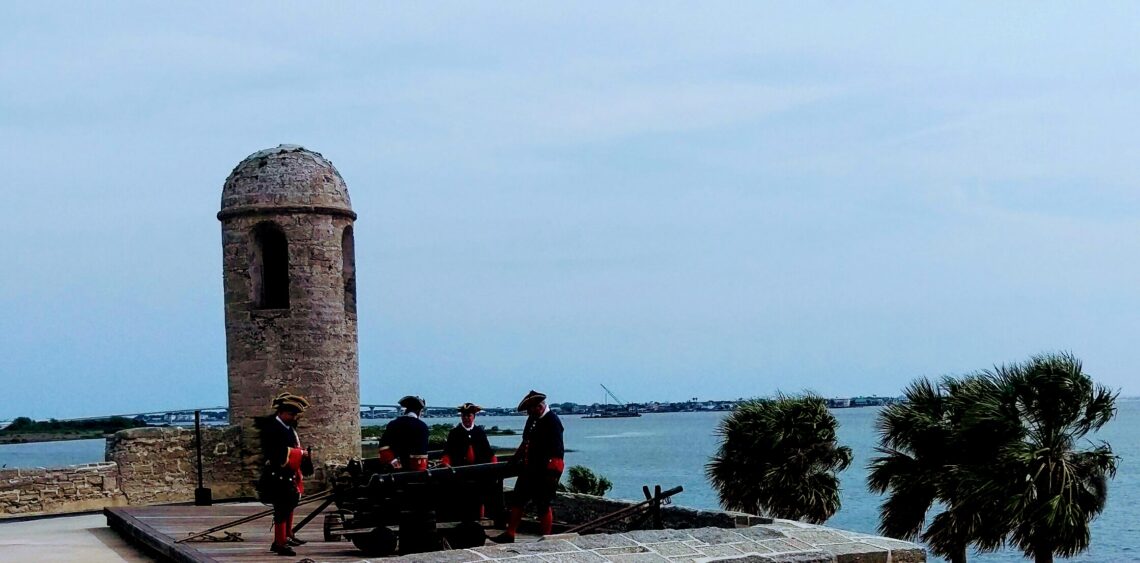
St. Augustine: Oldest City in the United States
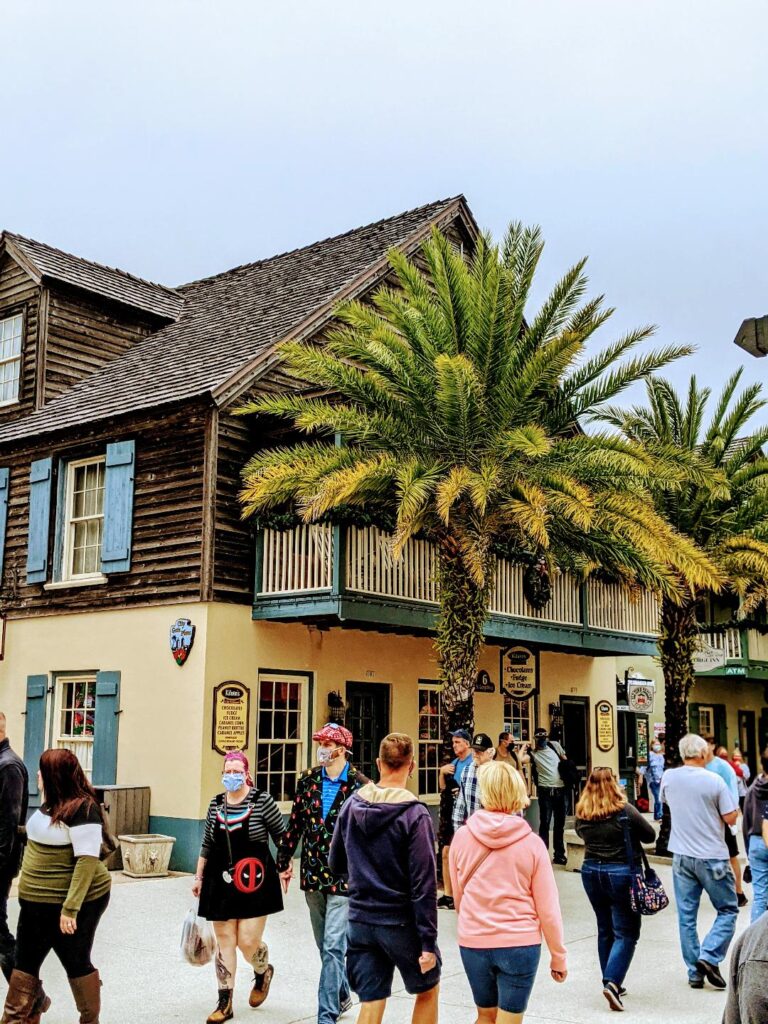
St. Augustine is considered the oldest city in the United States since its discovery by the Spaniards in 1565. When you arrive in the quaint historic district, you are transported to another time with the cobblestone streets, old Spanish architecture, and monuments around every corner. It’s as if a part of your trip is taking place in the late 1500s. Throughout the years, the Spaniards had their fair share of being under siege by different countries such as France and England, even the natives, who wanted to occupy this coastal land. In the end, the Spaniards prevailed, and you can now see their influence throughout the city.
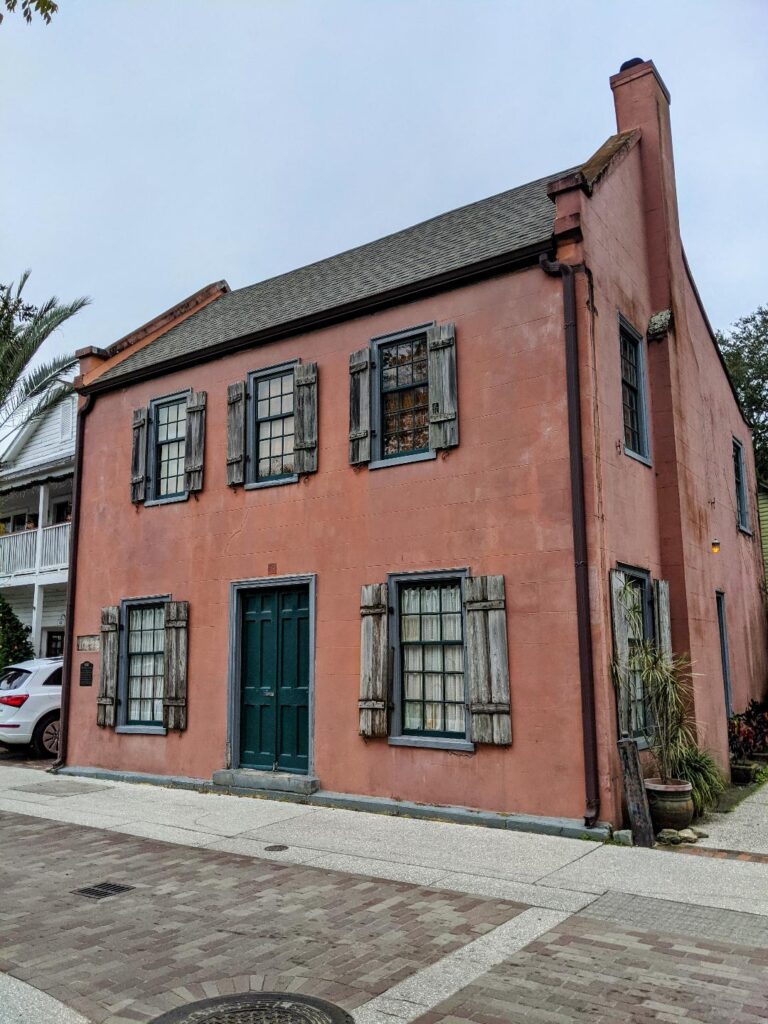
The historic district is full of small local shops, museums, and restaurants. You can visit the first wooden schoolhouse in St. Augustine, take a trolly ride around the city, and learn about the history. We enjoyed our day strolling cobblestone streets between shops enjoying the different buildings and how they were built. Although they are connected, each building seems to have its own character and story to tell. Actors dressed up in 15th-century attire, ready to tell the stories of the past and those who first walk the streets.
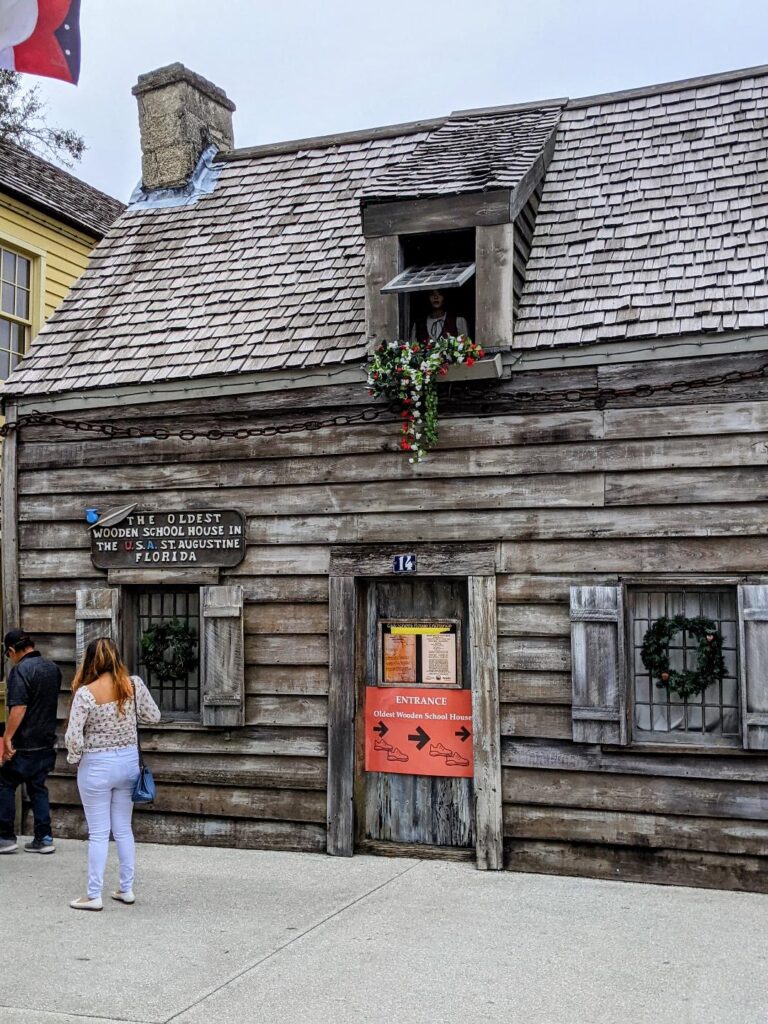
Castillo de San Marco
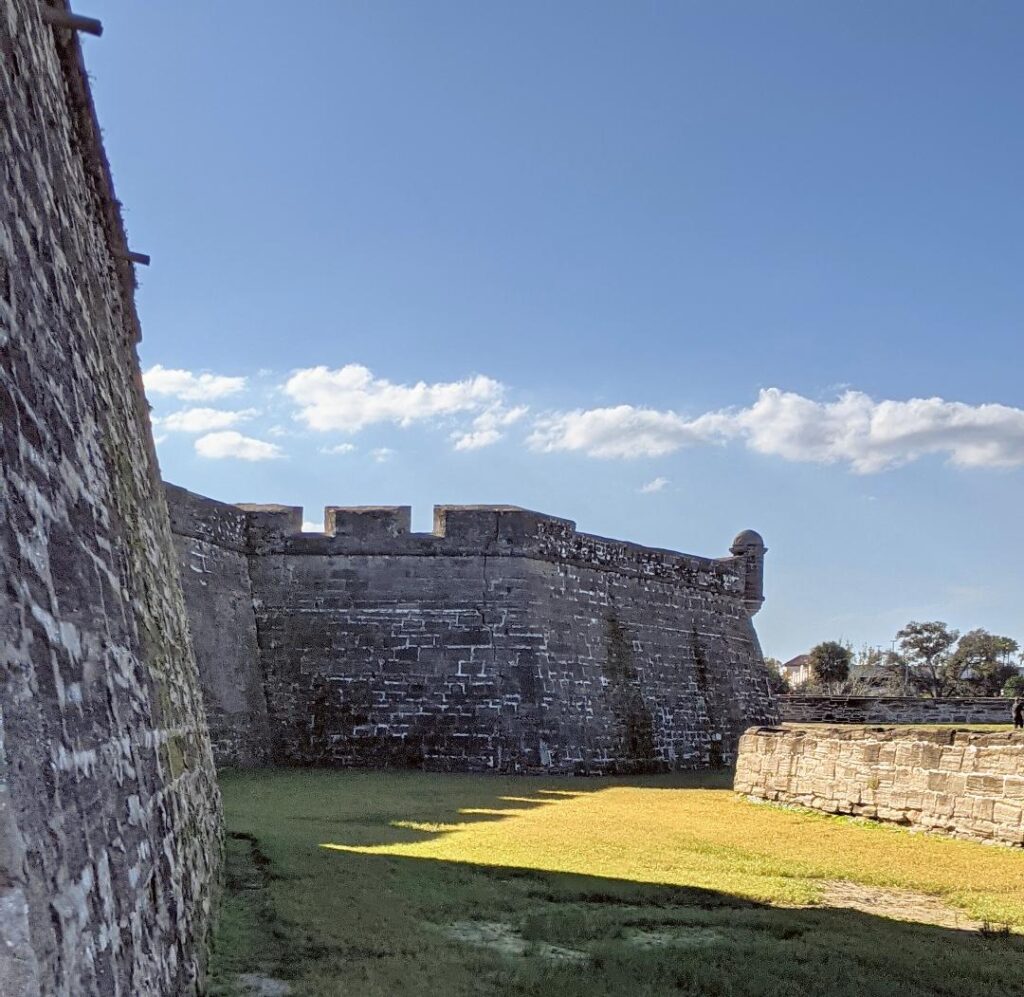
One of the places we visited while in St. Augustine was the Castillo de San Marco. This fort is located on the coastline in the historic district and is one of the main attractions. Castillo da San Marco was the original fort for protecting the city of St. Augustin from invaders coming from the water. It was burned from a land attack by the natives that clashed with the Spaniards. The fort is open to the public to explore the inside and outside to understand how soldiers live. When you first cross over the wooden draw bridge, you are greeted by an open grassy courtyard and can explore the fort to the right or left.
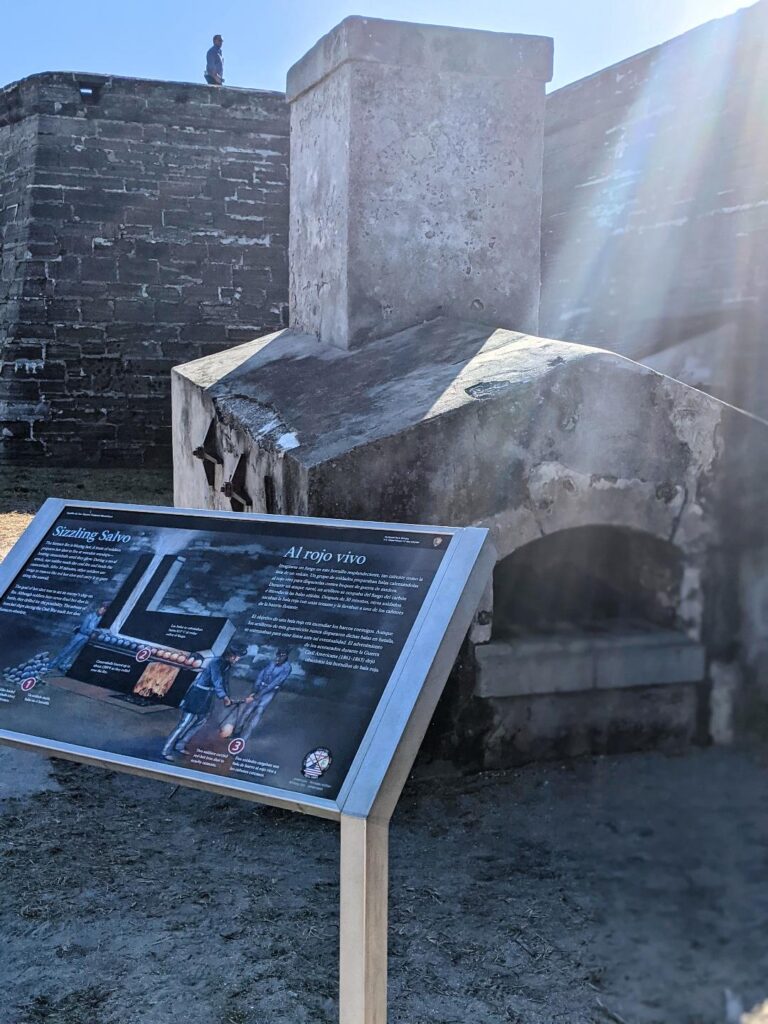
The four walls surrounding the courtyard hold secrets to the past for us to explore. Each room tells about its history from where they kept the ammunition, swords room, lavatory, and many more places to investigate. We enjoyed making our way to the top of the walls, where the cannons were once stored. Those who were on the top borders and in the towers during a patrol were in charge of ensuring the fort stayed protected and kept invaders at bay. It’s easy to see from the top walls why this place was idyllic to build a fort. It is overlooking the beautiful water, and you can see for miles.
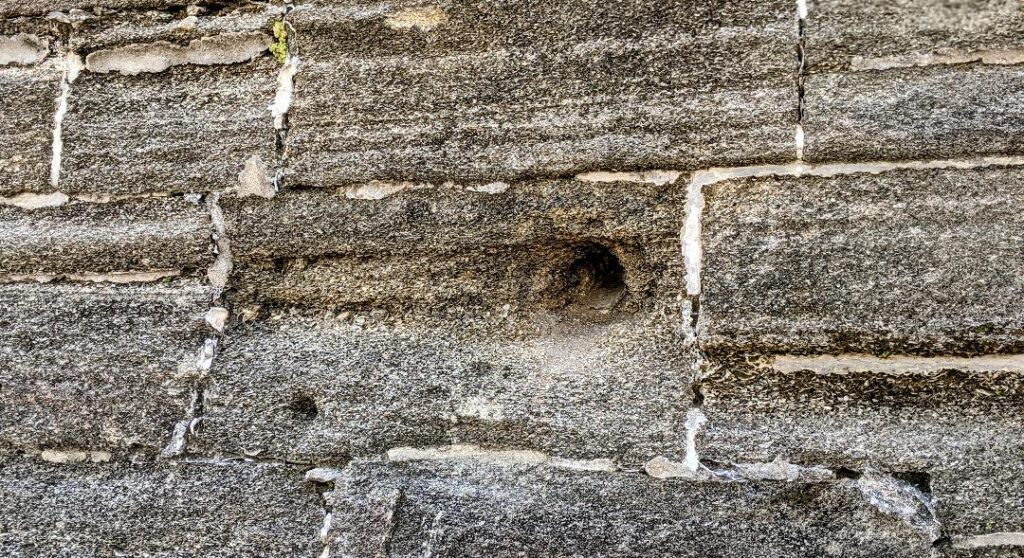
Once we finished our tour of the inside, we made our way to the outside area. The fascinating thing about the outside of the fort is seeing bullet and cannon holes in the walls from attack hundreds of years ago. There is still the original oven where they made cannonballs, and being able to walk the same path as those who called this place home so long ago is simply amazing.
Ponce de Leon Fountain of Youth
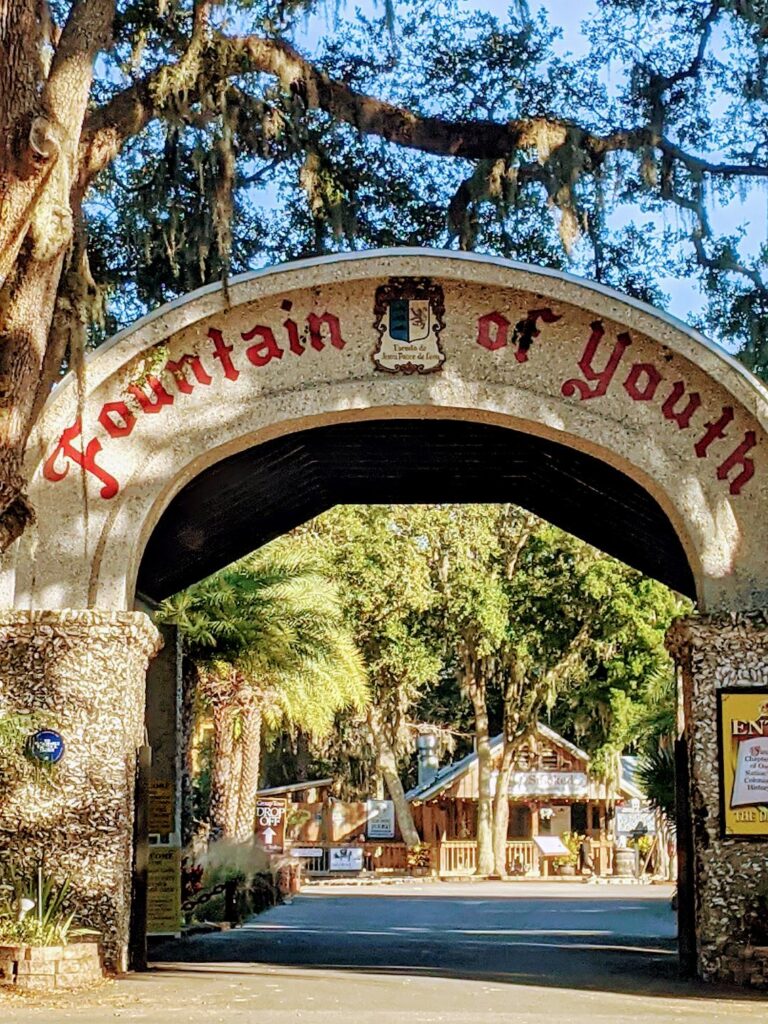
Another historic site we enjoyed was the Ponce de Leon Fountain of Youth. Yes, the fountain of youth indeed does exist but not how you might think. The fountain is a natural underground spring that is flowing water continuously. Since the water is fresh, continually moving, and naturally filtered, and those visiting the 15-acre park can taste the water in its purest form. It was an experience the family will not soon forget. We were also introduced to the natives, called Timucua, who originally occupied the land.
Once leaving the fountain area, you follow the path to a garden area that has free-roaming peacocks. These birds are magnificent and know the grassy area is their home, and you are just visiting. The path leads to an open area showcasing the Timucua’s lifestyle before Ponce de Leon and Catholosium had an influence. The straw huts, wood carvings, and pottery is placed throughout the display to show how this community lived.
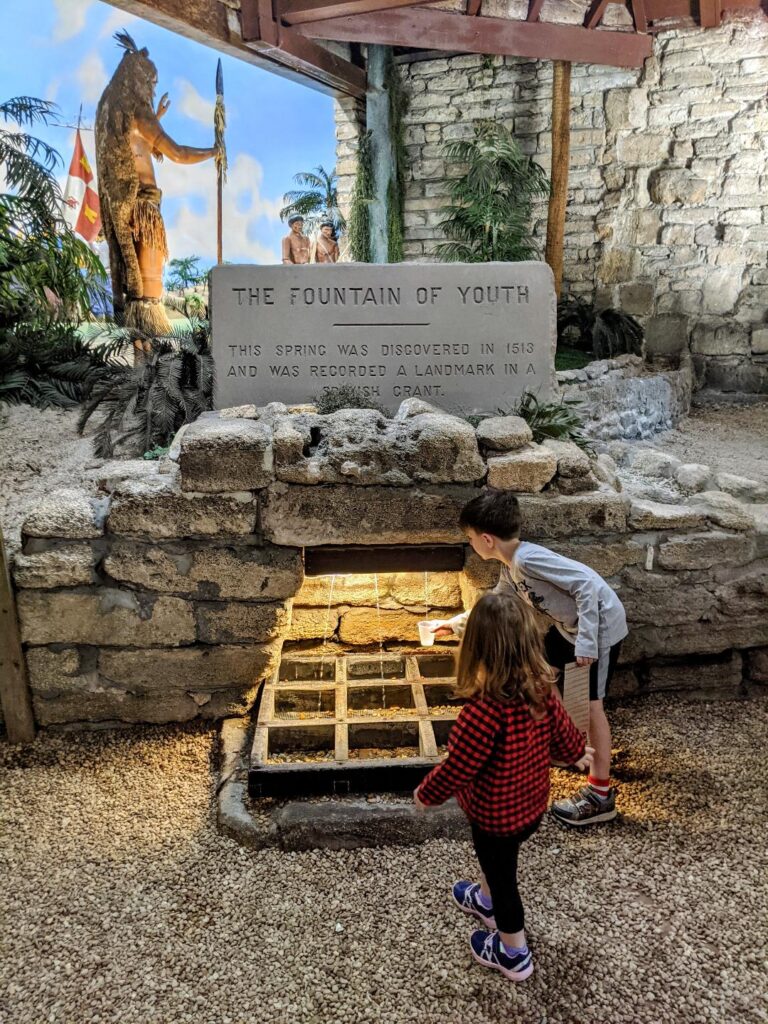
Another significant aspect of this park was interacting with actors who had a great knowledgebase of each area and even did demonstrations. When we made our way down the dirt path is was as if moving through time and going from around 2,400 BC to the late 1500s. Straw huts turned into wooden homes, wood carvings turned into blacksmith work, and hunting spears turned into bow and arrows and cannons. The blacksmith was an in-person demonstration where we were able to see how nails use to be made. We were told making one nail takes about a minute or so and would cost a penny per nail. Although this doesn’t seem like much, this would equate to about $1.66 in today’s terms.
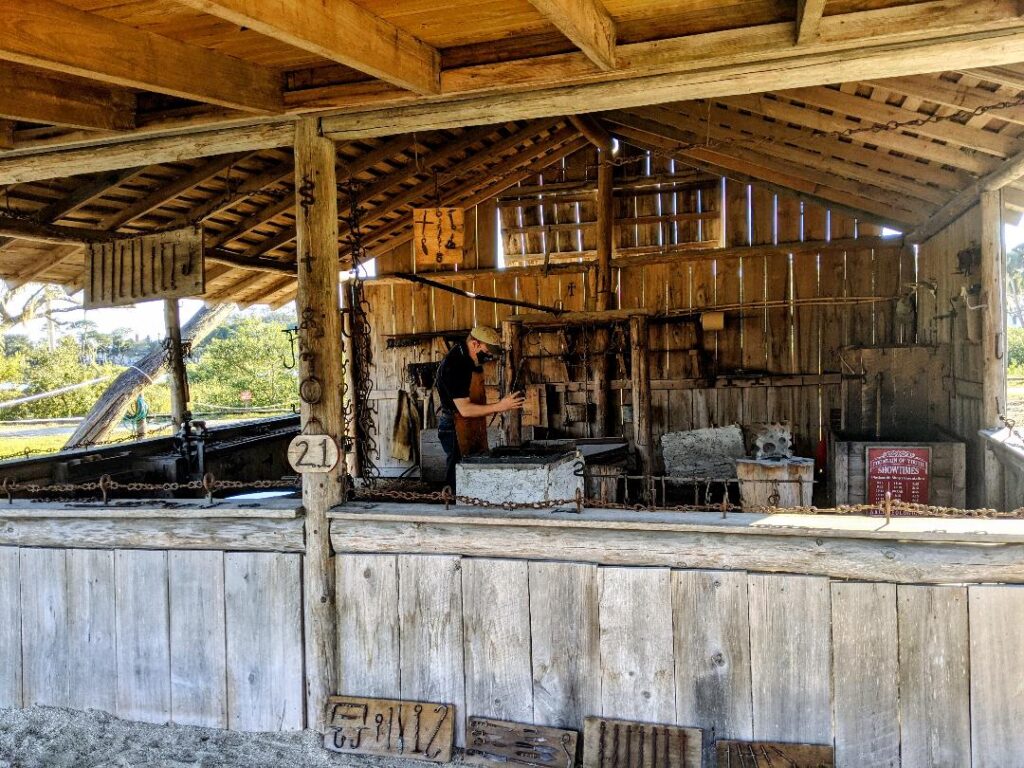
The next demonstration we were able to watch was the history and launching of bows and arrows and canons. The two men, dressed in era-age attire, explained the different types of arrows and bows and the projection of cannonballs during an attack. It was interesting to learn which were used for short-range, long-range, hunting, and war. Both men were very knowledgeable, and the kids enjoyed watching the demonstration to see if the arrow would hit the target’s center.
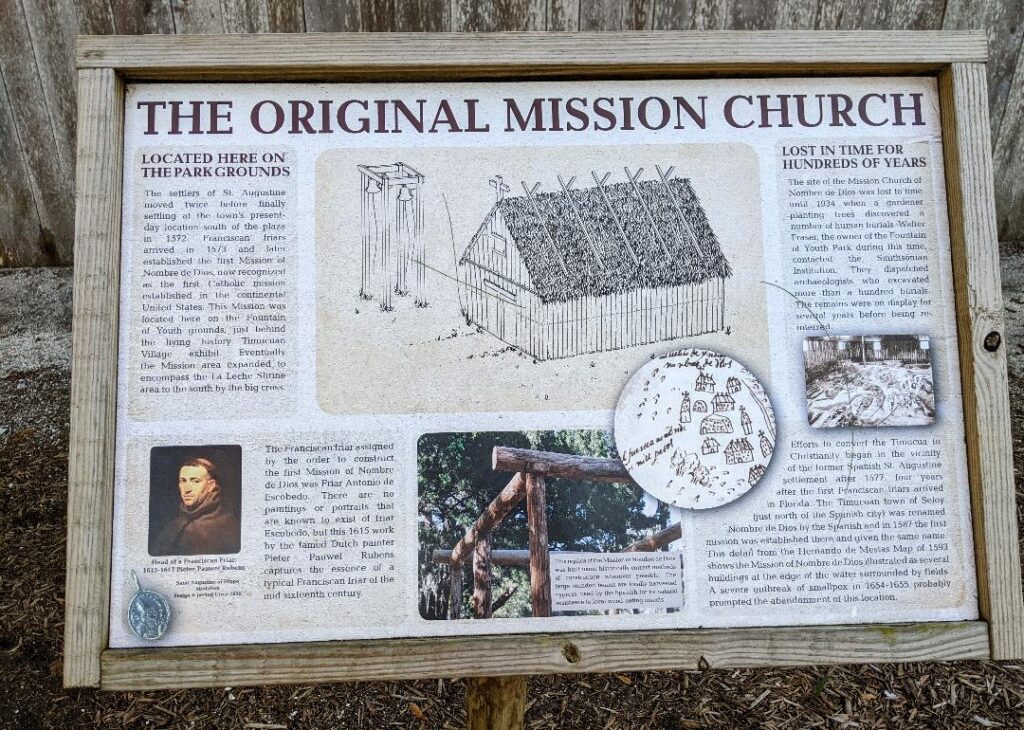
While completing the housing area path, we came to the church that was originally constructed in 1587. Ultimately it was destroyed during the 1700s when Queen Ann ordered raids on Catholic cities in the United States. Another mission was built and is now on the property to see how it would have looked when Catholicism was prominent in St. Augustine. The kids enjoyed climbing the stairs to the loft area to see over the church’s central area and get a better view of the common area outside.
To finish our exploration of The Fountain of Youth, we made our way to wooden boxes where our kids sifted through the sand. My son found a handful of sharks’ teeth, small bones, but the discovery of treasure, gems, and gold did not happen. This was, however, the best way to end our trip to the park.
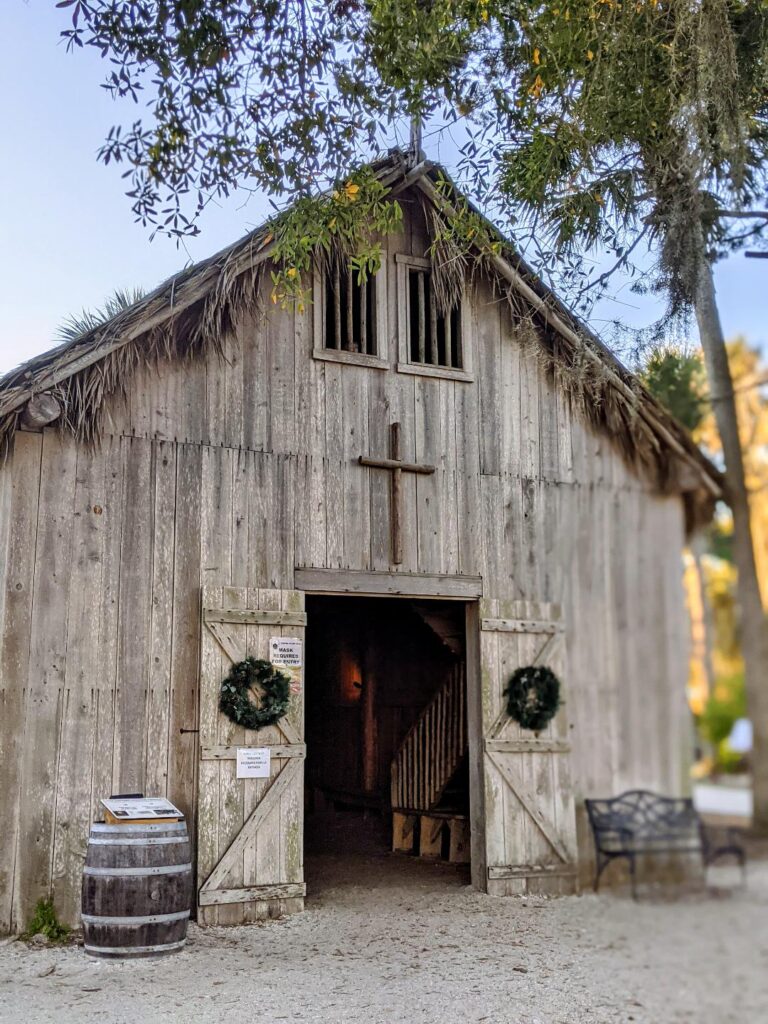
Pirate and Treasure Museum
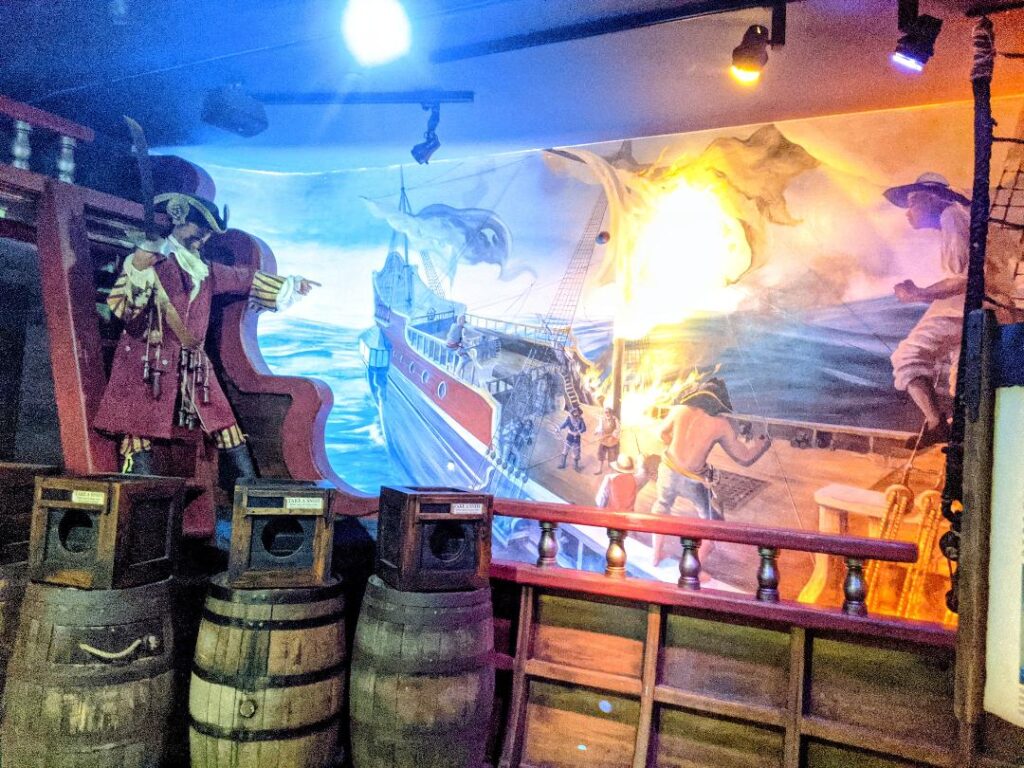
Lastly, we visited the Pirate and Treasure Museum in the historic district. By far, this has been the best museum we have visited for children. The details from the intricate clothing, expressive facial expression, and elaborate murals on the walls drew our attention from the start. Each room depicted a theme from living quarters to setting off mock cannons, steering a ship, and touching a genuine treasure chest.
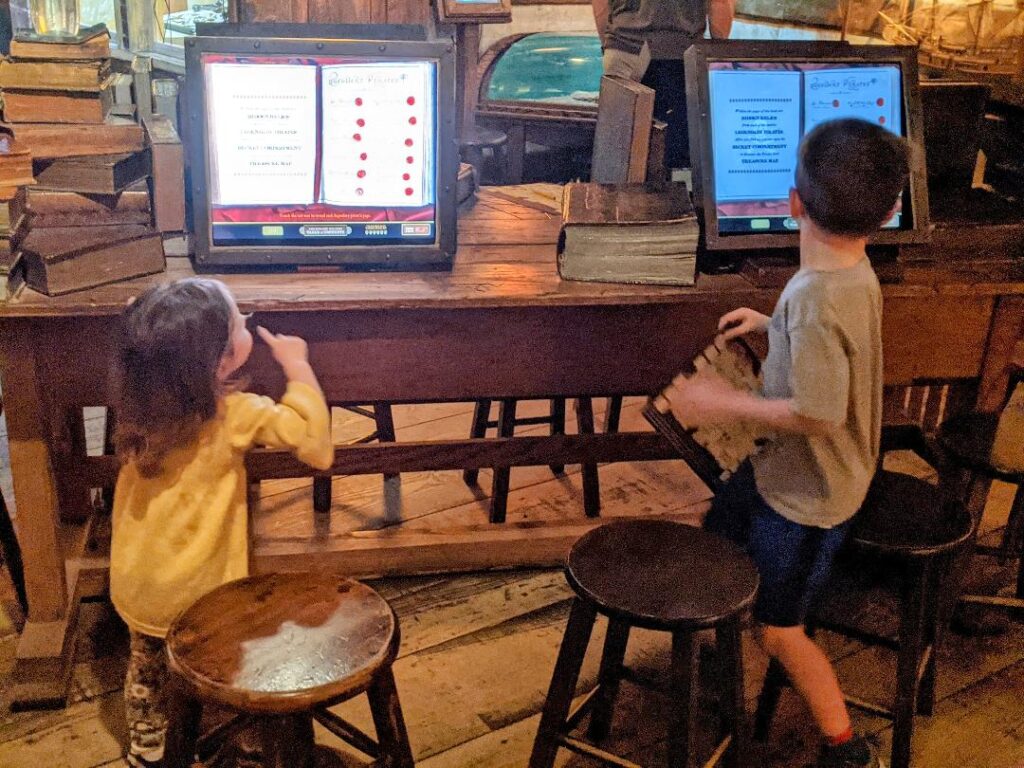
The kids get to follow a treasure map that shows all the great areas, interactive stations, and where the treasure is being kept in the museum. We learned about how pirating first started and learned about some of the most famous pirates, such as Black Bart and Captain Kidd. At the end of the tour, you see where Hollywood turned pirates into a fairytale-like character from the movies Goonies, Hook, and Peter Pan. To know the evolution from captains being told to seize ships from other countries by kings and queens, to epic battles at sea, finally seeing how a crocodile took the hand of Captain Hook was a wonderful experience, and we learned a lot.
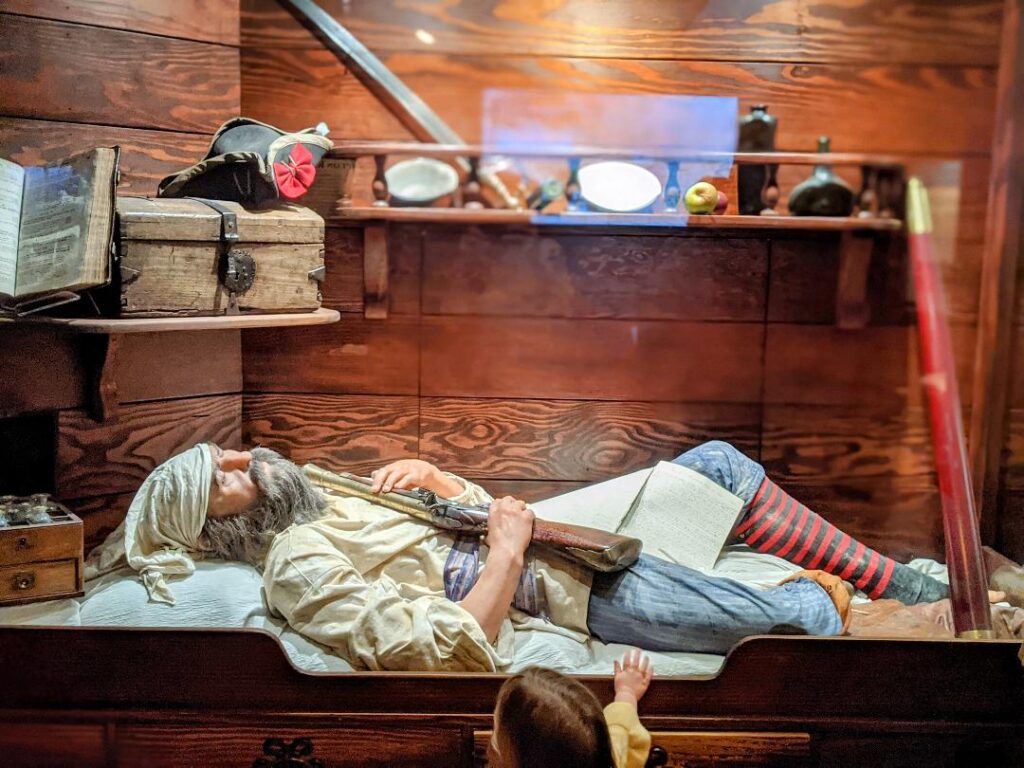
To say we enjoyed our 24 hours in St. Augustine would be an understatement. We are already planning another trip to see more great places this small historic city has to offer and continue to make memories through fun and continue learning about beautiful places we visit.
This post contains affilate links which I may receive compensation from a purchase at no additional charge to the buyer.
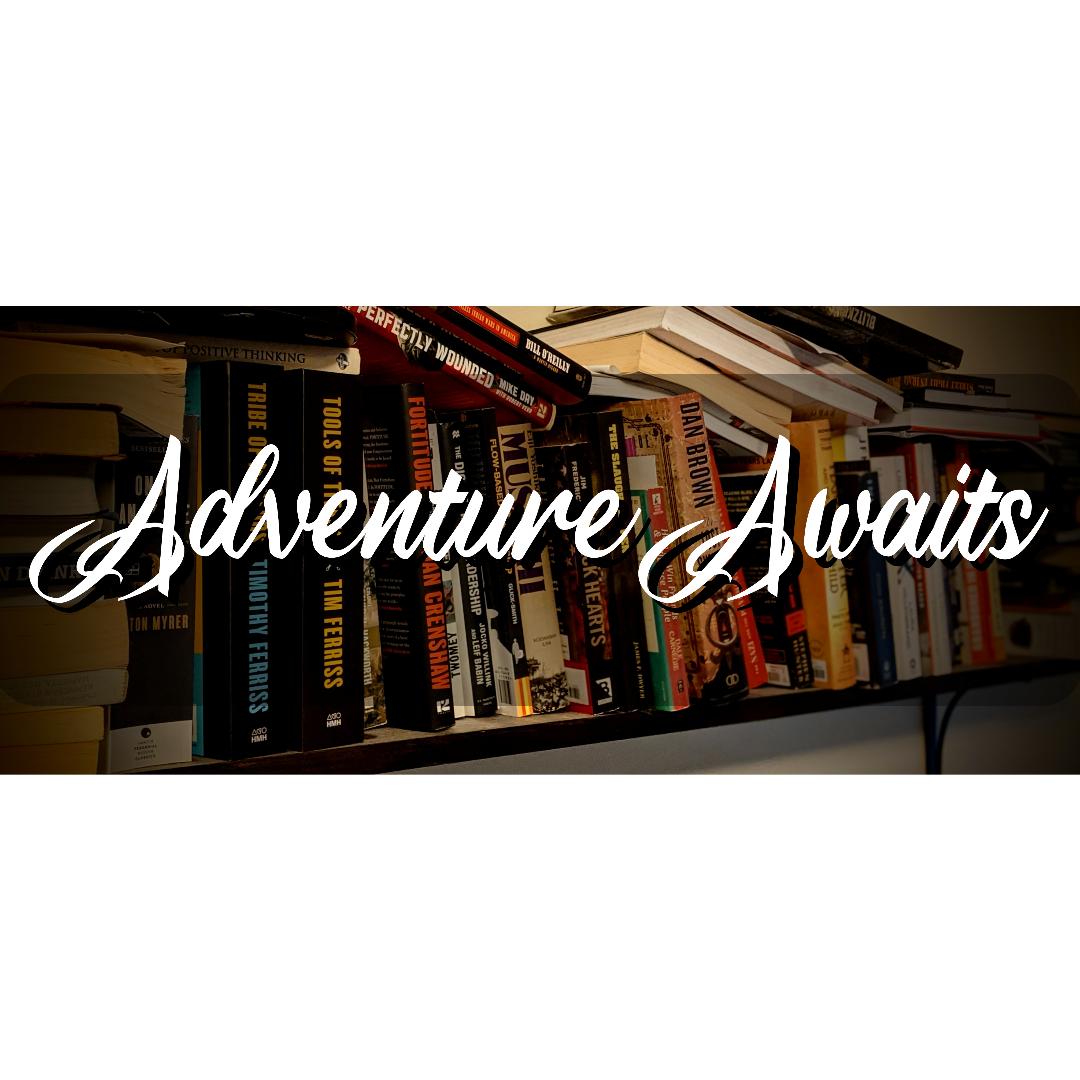
Adventure Awaits
You May Also Like

Savannah to Tybee: Savoring the Southern Coastal Gluten Free Bites
March 3, 2024
Restaurant or Cafe (Savannah)
January 11, 2020

28 Comments
lisa Manderino
I love historical travel. The more I learn about St. Augustine the more I want to go!
Carey M
It is a great place to visit.
Marianne
I think that my kids would LOVE the Pirate museum. That old church would make a very nice framed photo!
Carey M
The pirate museum was great fun and very interactive.
Chantelle
St Augustine so so cool! I haven’t been in years, your post makes me want to go back!!
Carey M
It has changed over the years and has so much to offer when visiting.
Barbara
History is very interesting to learn more about. I googled this location to discover that it is in Florida. Very interesting info.
Carey M
St. Augustine is full of history.
Cindy
I visited St Augustine years ago with my kids. We enjoyed the fort and the fountain of youth too! The pirate museum looks fun!
Carey M
The pirate museum was a bit hit with our kids.
Lindsey Vaughn
I’ve always loved St. Augustine, but never visited the Pirate & Treasure Musuem. Will have to go next time!
Carey M
I really enjoyed how interactive it was and learning about the evolution of pirates.
Holly
We just stayed at Wyndham Bonnet Creek Resort and they have a watch tower, too! (Of course, it’s manufactured, not historical.) Now I have to visit St. Augustine!
Carey M
I will have to check out the Wyndam Bonnet Creek Resort. I have not heard of it. I hope you are able to visit St. Augustine. Its such a great city.
shayne spude
That looks like a fun place to go and interesting. I might have a chance to go there this summer. I should take chance to go. Great article.
Carey M
I hope you are able to visit.
Peggy
I’ve been wanting to go to St. Augustine! And I need the Fountain of Youth!! Haha. I can’t wait to explore! Thanks for a great read!
Carey M
The Fountain of Youth was amazing. If I could have filled a water bottle, I would have. I hope you are able to visit soon.
Denise
I just finished on course on Spanish history and I would love to visit this city!
Carey M
I love courses on history. I think you would really enjoy the Fountain of Youth and the fort.
Julie Ann Hensley
That’s a busy day! I enjoyed reading about St. Augustine. I didn’t realize how much it had to offer as far as history, which is very interesting!
Carey M
It was a very busy day. We still didn’t see everything the city had to offer.
Michelle Steinhardt
I always enjoy learning more about our country’s history. Thanks for sharing.
Carey M
You’re welcome.
Jean Williams
I love visiting St. Augustine. I can remember the first time I visited. Went pre-pandemic shut-downs
and am looking forward t returning. Thanks for sharing.
Carey M
Not much has changed other than you need a mask for inside buildings and the line at the fort is longer. I hope you get to visit again soon.
Cathy
We only saw the Lighthouse in St. Augustine. Thanks for showing us so much more to see! Can’t wait to go there again!
Carey M
We haven’t vistied the lighthouse yet. Hoping to see it next visit.